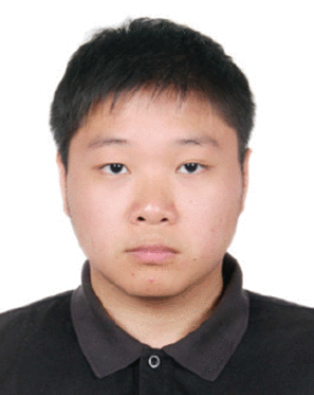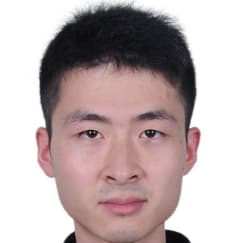Intelligent Modeling and Simulation Technology of E-Mobility
A special issue of World Electric Vehicle Journal (ISSN 2032-6653).
Deadline for manuscript submissions: closed (30 December 2021) | Viewed by 29111
Special Issue Editors
Interests: hybrid mobile robots; power systems of new energy vehicles; multi-energy complementarity and collaboration of distributed micro-grid
Special Issues, Collections and Topics in MDPI journals
Interests: optimization and control of intelligent electric vehicle (including EV/HEV) power systems; integrated control of vehicle automatic transmissions
Special Issues, Collections and Topics in MDPI journals
Interests: reinforcement learning; mobile robotics; quantum control
Special Issues, Collections and Topics in MDPI journals
Interests: power systems of new energy vehicles; modelling, simulation, and control of hybrid energy system; management and optimization control of fuel cell systems
Special Issues, Collections and Topics in MDPI journals
Interests: mobile robot navigation; 3D environment mapping; deep learning
Special Issues, Collections and Topics in MDPI journals
Special Issue Information
Dear Colleagues,
The 22nd Chinese Conference on System Simulation Technology and Application (CCSSTA 2021) is to be held in Chongqing, China, from 10 October to 14 October 2021. CCSSTA 2021 aims to provide original communication opportunities for experts, scientists, students, technological engineers, and other young talents in the field of simulation in universities, research institutes, and enterprises. The committee of the conference focuses on fully communicating the latest research results and progress in the field of simulation and sharing practical experience in the field of simulation. With the support of the Chinese Association of Automation (CAA)—System Simulation Committee and China Simulation Federation (CAF) —Application of Simulation Technology Committee, this conference has been hosted for more than 20 years.
Vehicle intelligence involves information perception, processing, decision-making control, intelligent learning, wireless communication, intelligent operation and scheduling, advanced energy integration, and so on. Therefore, research on intelligent e-mobility requires the support of the entire field of artificial intelligence. Scholars and experts in various fields are required to communicate and jointly promote the process of intelligence in related fields. Intelligentization and electrification are important issues to ensure that vehicles operate entirely autonomously and environmentally friendly. The current Special Issue on “Intelligent Modeling and Simulation Technology of E-Mobility” mainly includes selected papers from the participants of CCSSTA2021. The topics will include but not limited to:
- Sensor technologies for driverless e-mobility;
- Intelligent vehicles related image, radar, and LiDAR signal processing;
- Vehicle navigation and localization;
- State estimation, fault diagnosis, and health prognostics for energy storage systems in e-mobility;
- Advanced control technique for e-mobility;
- Energy integration and cyberphysical systems for e-mobility;
- Advanced artificial intelligence techniques for solving problems in e-mobility;
- Human factors and human–machine interaction.
The authors of the best papers presented at CCSSTA2021 will be invited to further extend their CCSSTA2021 paper, including their most recent research findings. After a second thorough round of peer review, these papers will be published in this Special Issue of the World Electric Vehicle Journal, WEVJ.
In addition, submissions from others who are not associated with this conference but with themes focusing on the above topics are also welcome. We warmly invite emerging and pioneer investigators to contribute research papers, short communications, and review articles that focus on intelligent e-mobility.
If you have any questions, please feel free to contact the editorial office at wevj@mdpi.com.
Prof. Dr. Zonghai Chen
Prof. Dr. YongGang Liu
Prof. Dr. Chunlin Chen
Dr. Yujie Wang
Dr. Jikai Wang
Guest Editors
Manuscript Submission Information
Manuscripts should be submitted online at www.mdpi.com by registering and logging in to this website. Once you are registered, click here to go to the submission form. Manuscripts can be submitted until the deadline. All submissions that pass pre-check are peer-reviewed. Accepted papers will be published continuously in the journal (as soon as accepted) and will be listed together on the special issue website. Research articles, review articles as well as short communications are invited. For planned papers, a title and short abstract (about 100 words) can be sent to the Editorial Office for announcement on this website.
Submitted manuscripts should not have been published previously, nor be under consideration for publication elsewhere (except conference proceedings papers). All manuscripts are thoroughly refereed through a single-blind peer-review process. A guide for authors and other relevant information for submission of manuscripts is available on the Instructions for Authors page. World Electric Vehicle Journal is an international peer-reviewed open access monthly journal published by MDPI.
Please visit the Instructions for Authors page before submitting a manuscript. The Article Processing Charge (APC) for publication in this open access journal is 1400 CHF (Swiss Francs). Submitted papers should be well formatted and use good English. Authors may use MDPI's English editing service prior to publication or during author revisions.









